Garden Galleries
Ready to get inspired? Start here!

Plants for Your Garden
These are some of our favorite plants. Mix and match plants for a design that meets your garden style. For some of you that means some exploration into the world of gardening.
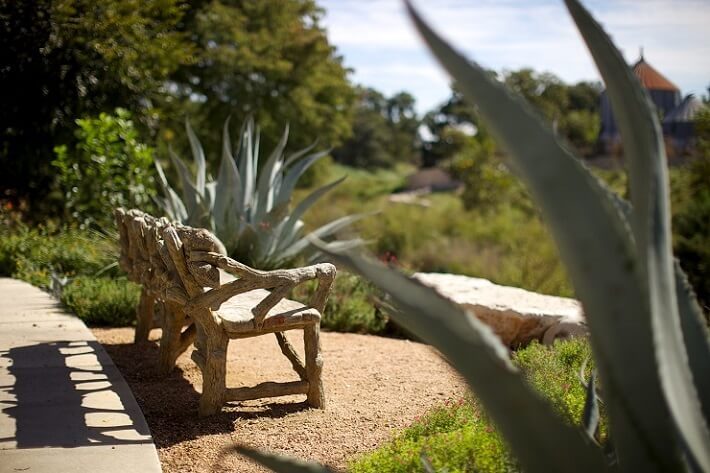
A Century Agave
These Century Agave plants are a safe distance from seating. They grow fast and get big so be sure you have enough room for them to grow to their impressive size.
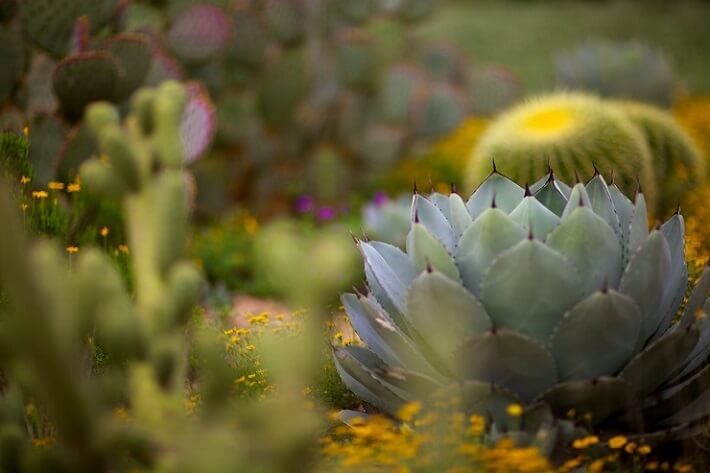
Artichoke Agave
The artichoke agave makes a compact architectural statement in any garden.
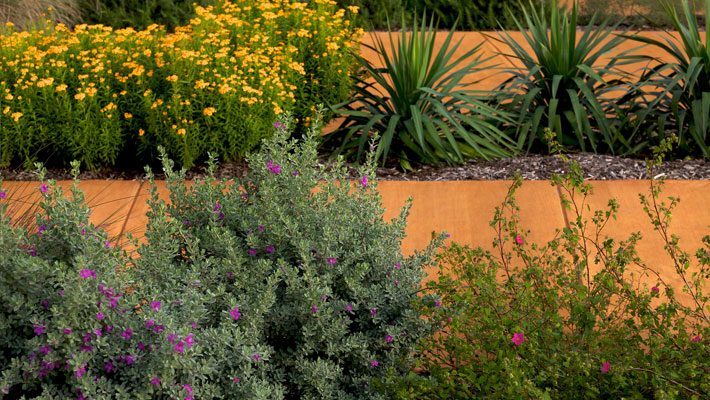
Cenizo with Yucca, Rock Rose and Mint Marigold
Seen flowering in the foreground with rock rose, cenizo adds interest with its gray, white, or dusty-green foliage. Lavender flowers appear briefly after rain events in summer and fall. It is among the most drought tolerant of all large landscape shrubs and is best left in a natural from rather than hedged. The soft leaf yucca (upper right corner) is also available in the summer coupon package and needs no additional water once established.
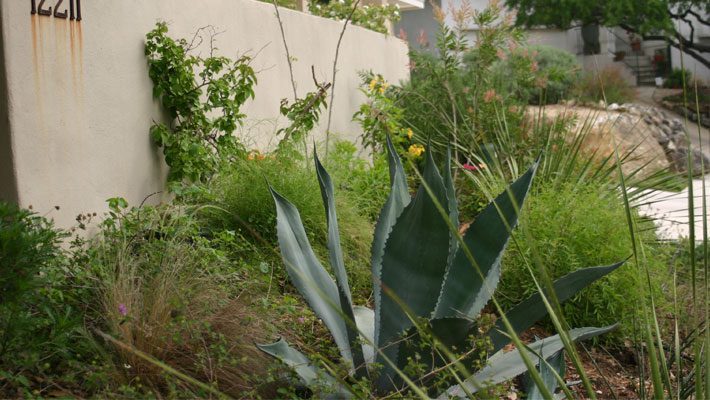
Century Agave with a Sotol
The majestic century agave is shown here as a baby with its silver skin and wicked thorns through the saw-toothed sotol in the foreground. Depending on which type of plant you select – yucca, agave or sotol – they may have sharp thorns on leaf tips or just a rough edge. This characteristic should be a major factor in plant placement in your yard.

Lindheimer Muhly with Salvia in foreground
Lindheimer's muhly is hardy and attractive. Seen here with autumn sage in the foreground, it’s good for thin soils. Crop it in late winter to control the size and reduce accumulation of spent leaves.
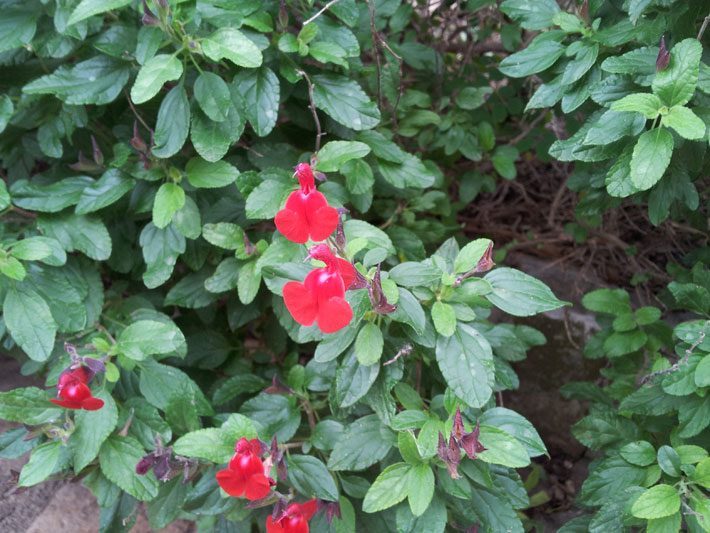
Little Leaf Sage
Tough selections of salvia such as autumn sage, tropical sage and little leaf sage that are generally less than 30 inches in height. These sages add attractive punches of color, but also appeal to hummingbirds and butterflies.
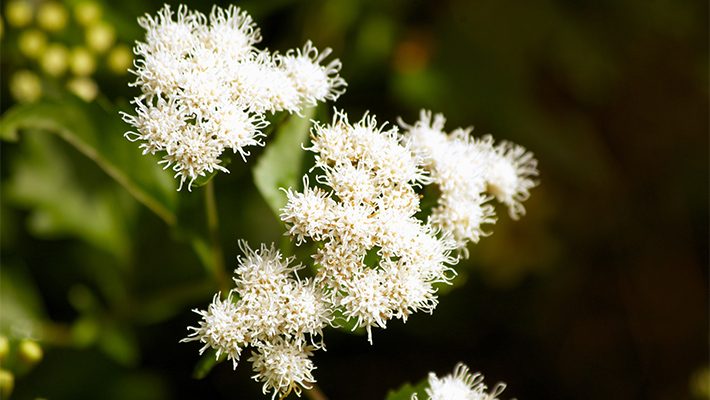
Mistflower
Mistflowers could be called butterfly candy. This blue mistflower is covered in queen butterflies. Plant in sunny areas, sit back, and watch the butterfly show.
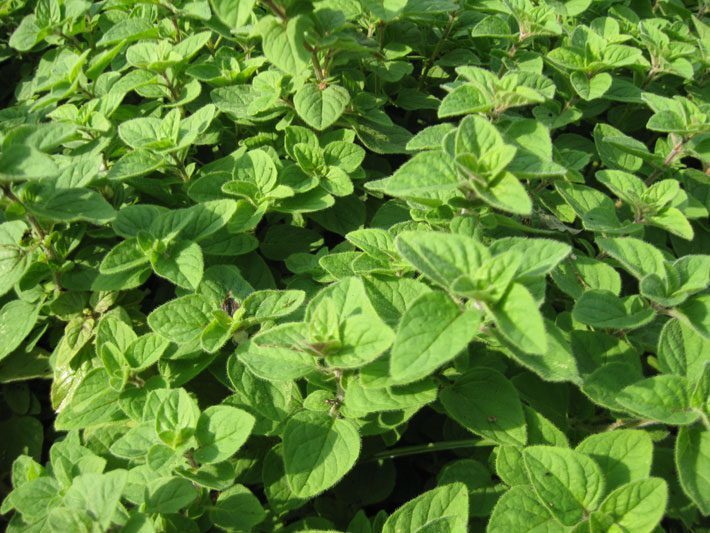
Oregano
Oregano is mounding and sprawling, but can be kept compact with regular pinching back. There are a wide variety of oreganos. Greek and Italian oregano do well and are used widely in cooking. Pinch back regularly for your culinary adventures.
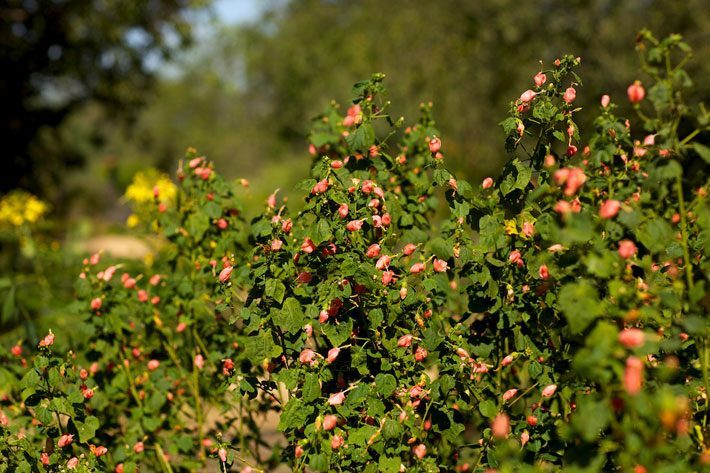
Pink Turk's Cap
This Texas Superstar plant is a butterfly and hummingbird’s dream. Does well in sun and shade and is a tough, versatile, drought-tolerant plant that’s native to South Texas. The pink variety is generally not as vigorous at the red.
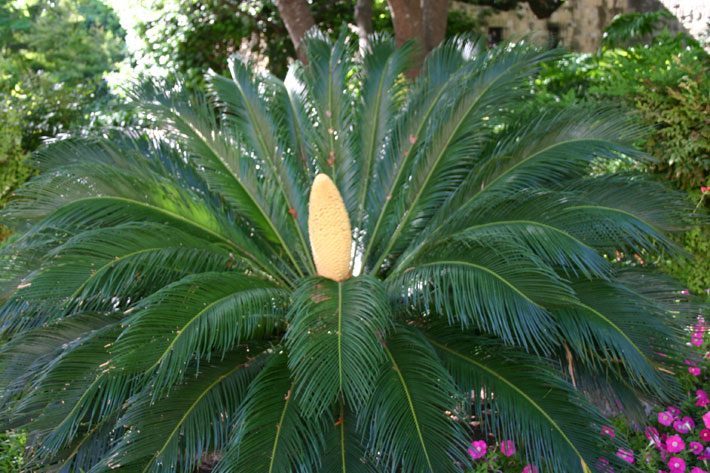
Prehistoric Sago
Bring a little Jurassic Park to your landscape. Not a true palm but a member of the ancient Cycad family of plants, sagos were around with the dinosaurs. These plants have changed little since then. They’re evergreen, long-lived and slow-growing so large ones are valuable. Can get nipped in a frost.
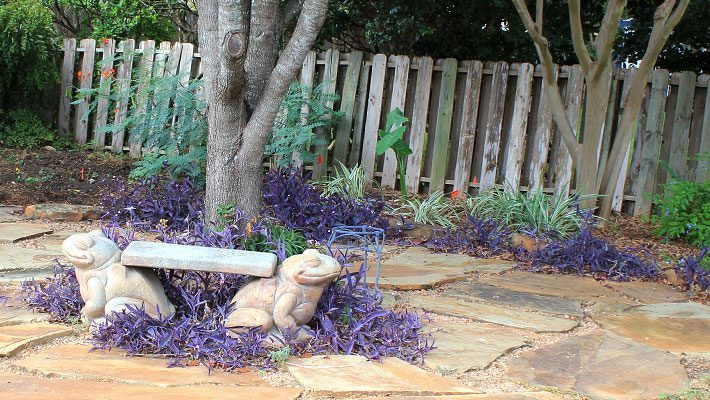
Purple Heart Pops onto Patio
Purple heart can be identified by its fleshy purple leaves and purple blooms. Almost indestructible in sun or shade, this plant is very resistant to the summer heat. It readily spreads and is easily propagated; just break off a piece and stick it in the ground where you want it, water once. Since it will spread, plant it where it has room to grow or in a confined area, like here in the middle of this fun patio.
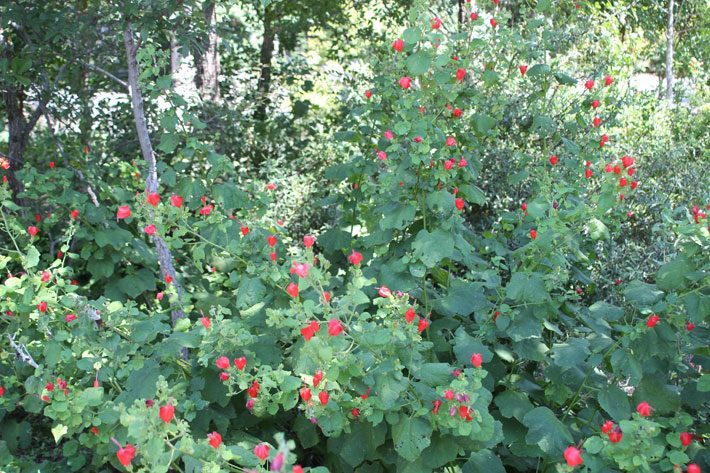
Red Turk's Cap in Shade
Shown here in the shade, the versatile sun or shade tolerant Turk’s cap displays red flowers loved by hummingbirds; may freeze back in cold winters. Once established, needs little to no supplemental water. Leaves may wilt in summer heat especially if planted in the sun.
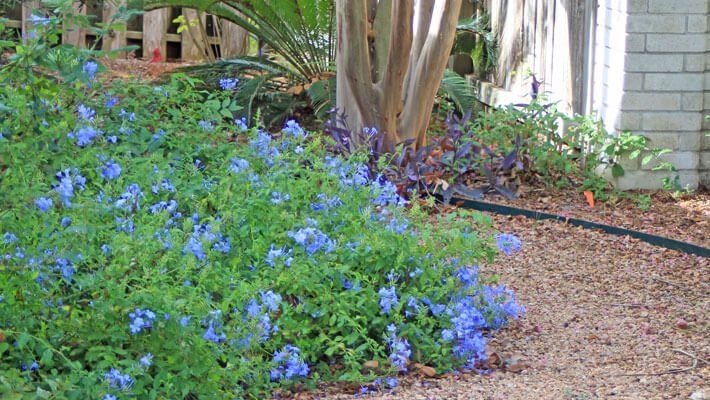
Shady Blue Plumbago
Plumbago is a tender perennial with profuse blue (or white) flowers that bloom summer through frost. It loves the heat and provides a natural habitat for butterflies. It has a graceful, informal growth pattern (as seen here) as it tumbles over a shady pathway.
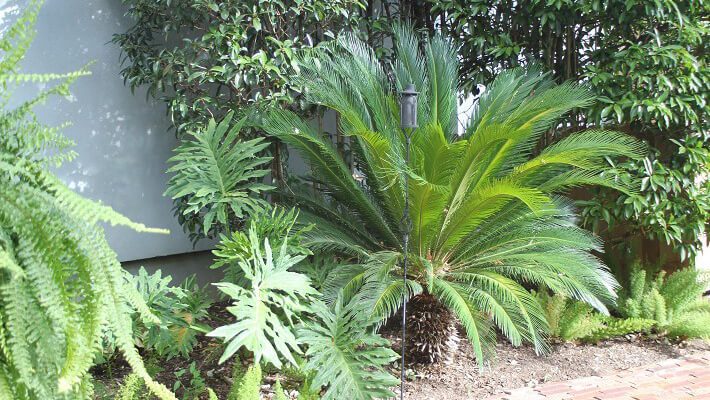
Structural Sego and Splitleaf Philodendron
Sego and split-leaf philodendron pair nicely and appreciate a more sheltered spot. Philodendron in particular do best in shade and need very little water ever, but are susceptible to cold weather so it’s best to locate in areas of your yard that are sheltered, and be prepared to cover them up with sheets during freezing temperatures.
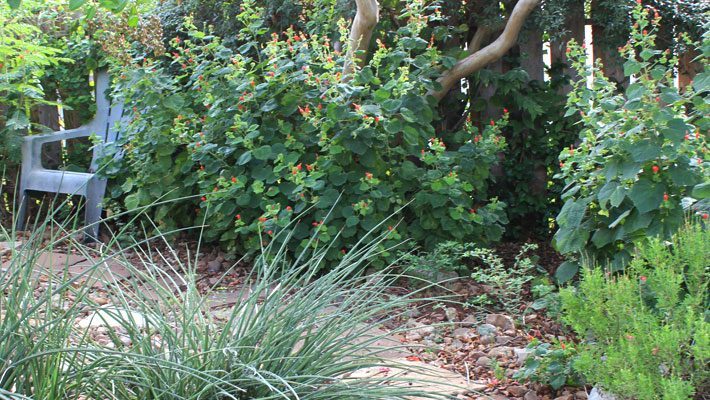
Turk's Cap on a Walkway
Turk’s cap (seen here sporting its characteristic turban-shaped red flowers) is a Texas native we think should be in every yard. It’s a favorite of hummingbirds and prospers under dappled shade but will not bloom as well without some sun exposure. It’s shown here with red yucca and small red sage in the foreground. It can stay green through mild winters, but most people cut it back to the ground each year as it rebounds fast.



